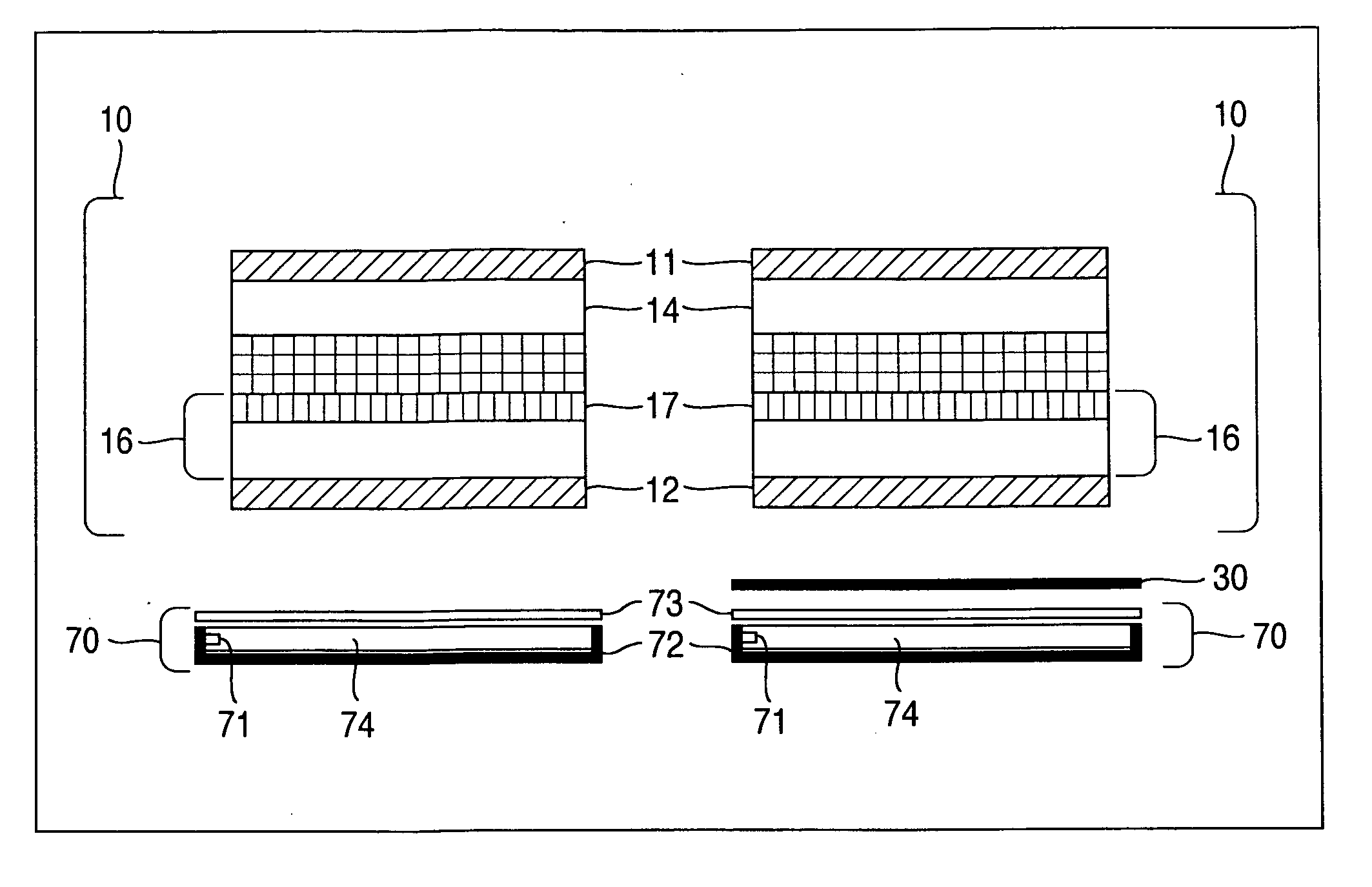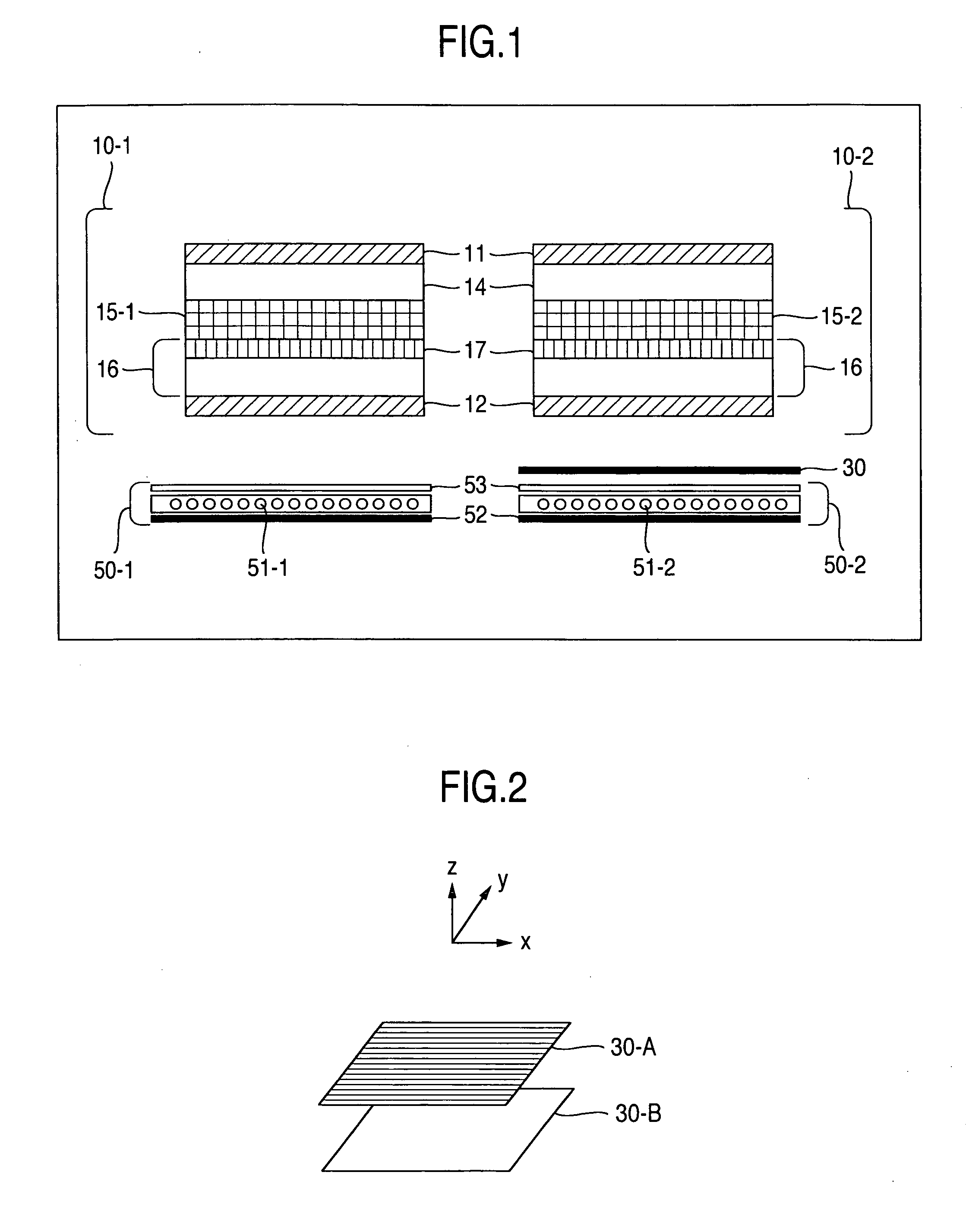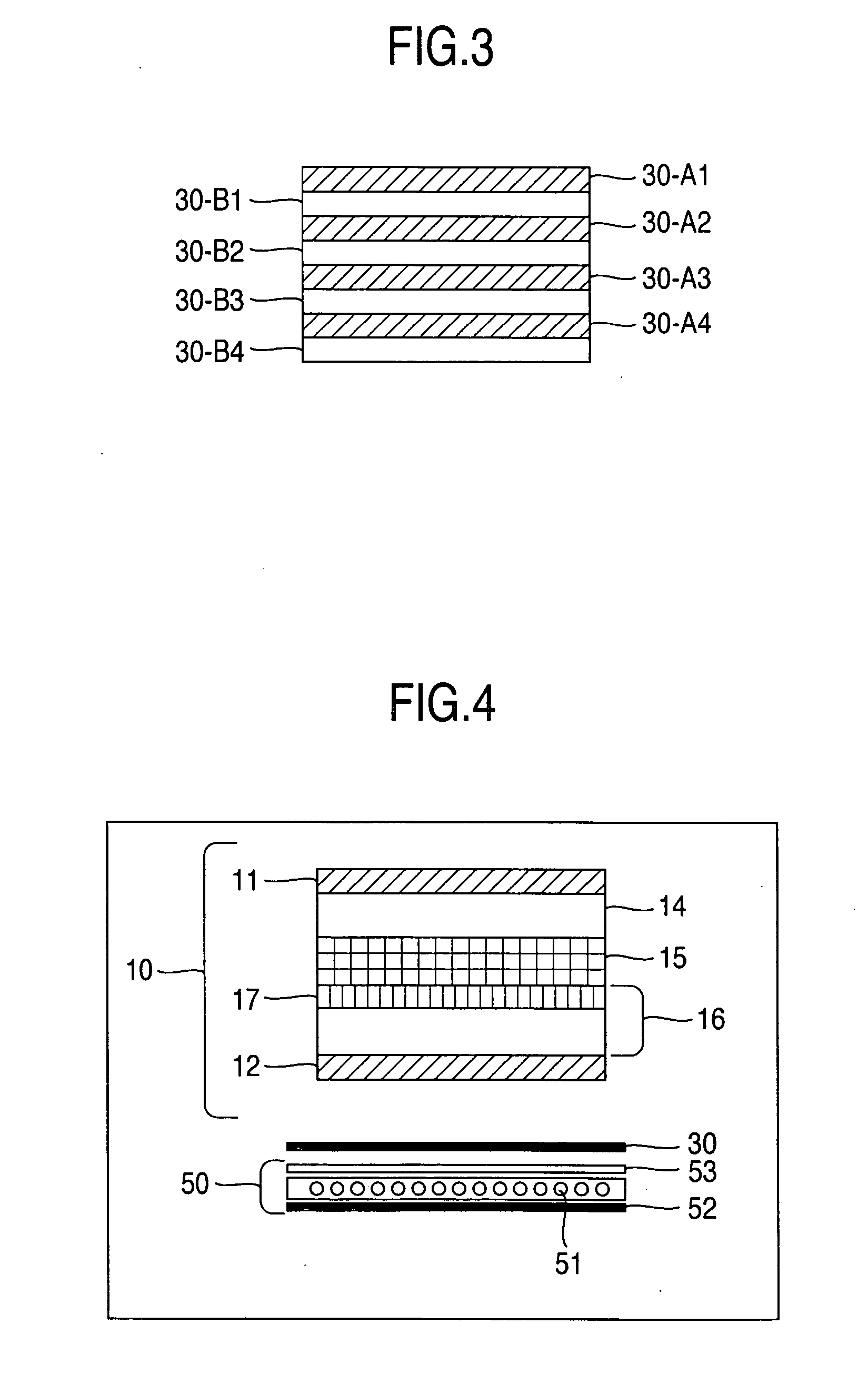Liquid crystal display
a liquid crystal display and display technology, applied in non-linear optics, instruments, optics, etc., can solve the problems of increasing the power consumption of the liquid crystal display, requiring a large change in the manufacturing process, etc., and achieve the effect of improving the brightness efficiency of electric power
- Summary
- Abstract
- Description
- Claims
- Application Information
AI Technical Summary
Benefits of technology
Problems solved by technology
Method used
Image
Examples
embodiment 1
[0068] A structure of the liquid crystal display according to the present embodiment is shown in the right side of FIG. 1. The left side of FIG. 1 shows a general liquid crystal display as a comparative object. A reflective polarizer 30 shows the maximum reflectance at a wavelength of about 450 nm as is shown in FIG. 12. The reflective polarizer was obtained by preparing birefringent films 30-A having a refractive index of 1.6 for an extraordinary ray and a film thickness of 70 nm, and isotropic layers having a refractive index of 1.5 and a film thickness of about 70 nm, and stacking about 20 layers of them respectively so as form a configuration, for instance, of the reflective polarizer in FIG. 3. FIG. 13 shows a result of having compared emission spectra between backlight units, in which (1) shows an emission spectrum of a backlight unit 50-1, and (2) shows an emission spectrum of a backlight unit 50-2. As is understood from the figure, the lighting unit according to the present ...
embodiment 2
[0069] A structure of the liquid crystal display according to the present embodiment is shown in the right side of FIG. 1. The left side of FIG. 1 shows a general liquid crystal display as a comparative object. A reflective polarizer 30 showed the maximum reflectance at a wavelength of about 450 nm as is shown in FIG. 12. FIG. 14 shows a result of having compared emission spectra between backlight units, in which (1) shows an emission spectrum of a backlight unit 50-1, and (2) shows an emission spectrum of a backlight unit 50-2. In addition, liquid crystal layers 15-1 and 15-2 were the same type as an IPS mode described in JP-A-2001-056476, and were formed so as to show the retardation of respectively 350 nm and 440 nm. As a result, the liquid crystal display according to the present invention showed a contrast ratio increased by 10% and brightness in displaying white also increased by 10%, while keeping a color temperature in displaying white and power consumption approximately equ...
embodiment 3
[0070] A structure of the liquid crystal display according to the present embodiment is shown in the right side of FIG. 1. The left side of FIG. 1 shows a general liquid crystal display as a comparative object. The reflective polarizer 30 showed the maximum reflectance at a wavelength of about 660 nm as is shown in FIG. 15. The reflective polarizer was obtained by preparing birefringent films 30-A having a refractive index of 1.6 for an extraordinary ray and a film thickness of 105 nm, and isotropic layers having a refractive index of 1.5 and a film thickness of about 105 nm, and stacking about 20 layers of them respectively so as form a configuration, for instance, of the reflective polarizer in FIG. 3.
[0071]FIG. 16 shows a result of having compared emission spectra between backlight units, in which (1) shows an emission spectrum of a backlight unit 50-1, and (2) shows an emission spectrum of a backlight unit 50-2. As is understood from the figure, a cold cathode fluorescent tube ...
PUM
| Property | Measurement | Unit |
|---|---|---|
| wavelengths | aaaaa | aaaaa |
| wavelengths | aaaaa | aaaaa |
| wavelength λ2 | aaaaa | aaaaa |
Abstract
Description
Claims
Application Information
 Login to View More
Login to View More - R&D
- Intellectual Property
- Life Sciences
- Materials
- Tech Scout
- Unparalleled Data Quality
- Higher Quality Content
- 60% Fewer Hallucinations
Browse by: Latest US Patents, China's latest patents, Technical Efficacy Thesaurus, Application Domain, Technology Topic, Popular Technical Reports.
© 2025 PatSnap. All rights reserved.Legal|Privacy policy|Modern Slavery Act Transparency Statement|Sitemap|About US| Contact US: help@patsnap.com



